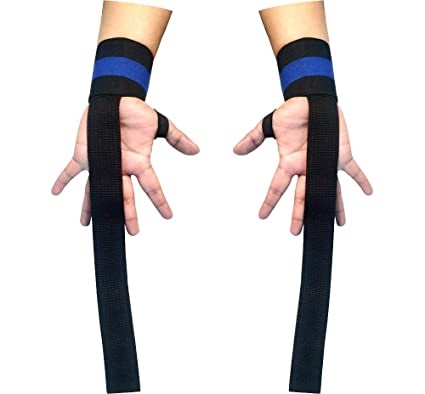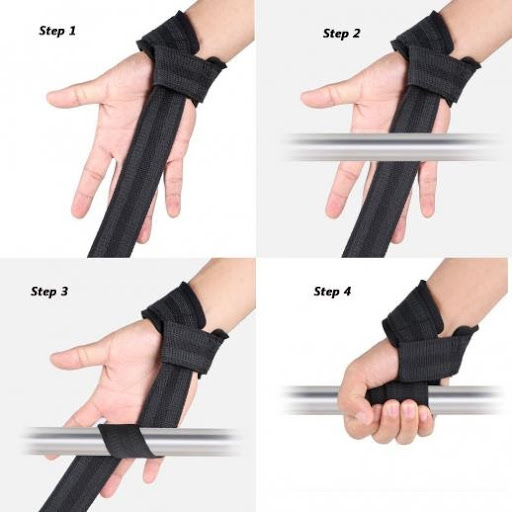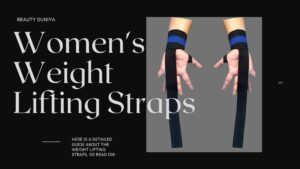There are many women out there who have been on a lookout to start weightlifting and to try to get their hands on the weight lifting straps . Here is a detailed guide about the women’s weight lifting straps , so read on!
What is lifting wrist support women’s strips:
These are an accessory for weightlifting which wraps the hand and bar to support the handle and provides the grip for heavier weights.
Weight heighteners are around 1 to 1/2 inches wide, 12 to 22 inches in length and are commonly made of leather, nylon, and canvas material.
An important point to note here is that the braces vary from the bracelets. Many people confuse between the two, but handles do not have straps and are used for various workouts.

Hate Reading? Listen to the summary of this article in Hindi.
What Is The Purpose Of Lift Strip?
Grip strength also becomes a factor that restricts people, particularly those who increase power and anyone who attempts to improve it.
High elevation brackets are meant to minimize tiredness to help you concentrate on your muscles when heavy elevations are pulled.
You may then focus on completing your heavy pull rather than being worried about your grip.
You tie the weight to your hands so that you can carry the body without falling out of your grasp.
The ultimate goal is to support your grip to keep on heavier weights with lifting belts.
We recommend that you only use straps for that reason! For warm-ups and lighter weights, there is no need for straps.
These straps are primarily used to make you pull heavier!
Critical Benefits of Lift Straps:
The key advantages of weightlifting by using weight lifting straps Decathlon are:
- Heavier lift, more extended lifting: Weight lifting straps are designed to connect your hands with weight. This helps you to concentrate on completing heavy sets and at the same time, focusses on your core strength. This allows those who train for power to lift more and therefore continue to make progress.
- Reduces grip tiredness: There is a limit for the grip to bear, and after a point of time it gives up. It can often discourage you from making further progress, but this is when weight lifting straps come to your aid! Straps minimize grip exhaustion so that you can perform your weight lifting activity without stress. Using lifting belts will help you grip the muscle groups you are training before targeting them. You will continue to improve strength and muscle building in this way.
- Minimizes accident risk: As we said, straps hold your hand tightly and safely so that the heavyweight does not fall out of your hand. With your wrist secure and you don’t give up on the weight, you lift heavier without compromise.
If lift straps can be used:
When you exercise with a maximum or near-maximum weight, you always have your grip on the back before your top back, pitch, lats, or hamstrings .
We strongly advise you to use lifting straps to avoid this. Go as long as possible when you are warming up.
Until your first job on exercises such as hanging strength cleansers, sliders, or dumbbell squats, you can use straps on the last one or two warm-up sets.
- Cleans hanging power: You can’t do it with the Hang Power Cleans, which is the preferred Clean variation for many sports athletes because you are grabbing on the bar for the whole package. The power cleanses off the floor helps you to reset your grasp between each rep and remove the restriction from straps. Moreover , without worrying about your grip, you can concentrate on speeding up the bar.
Using straps will also improve bar pace, which is an excellent thing to build more strong athletes.
Just make sure you keep enough slack between the belt and the bar so that there is enough space for your wrists to maneuver around.
It is difficult to carry the bar, even while wearing straps, with hefty weights. So it would help if you secured the straps around the bar, which restricts the movement of the wrist in your capture.
This can make it potentially risky to hang power cleans with straps.
- Falsehoods: Many DCs with a mixed grip can result in a biceps tear. There’s a fair chance you’re not training for uplift meetings either, so there is no need to take the risk.
- Pulldowns and Rows: Barbell rows, single-arm dumbbell rows, Lat pulldowns, and seated cable rows are basic exercises that help in making your back bigger and stronger. You would want to use your lats and rhomboids properly to make the most of these movements. You can take your forearms and biceps in heavier weights without belts to shift the dumbbell or weight stack. You can suffer back issues if you do not undergo rows or pulldowns in the expected muscles.
- Dumbbells Single-Leg Movements: The split squat, Bulgarian split squat, and other single-leg dumbbell workouts will help you strengthen your overall core. Keeping 100+ pounds in each hand will quickly wear out your grip as your legs pump forward.
Remember that your hands’ size is doubled because you make a set twice (subsequently on both legs).
Four Dumbbell reverse lung packs, for example, are translated into eight for hands and forearms.
Thus, you may struggle to keep your legs long beforehand, so lifting straps are very mandatory when heavyweights are reached.
If no straps are used:
Straps do not provide any benefits when you take something out of your body.
There is no gain from using them in direct arm working, as the loads you use will not surpass those in your hands.
Thus, our list of exercises with omitted straps is as follows:
- Vertical and Horizontal presses
- Pushdown and Extension Triceps
There are 50/50 drills such as Chin-Ups and Farmer’s Walks as well. It is up to your personal preference and training targets whether you want to use a strap or not.
However, in higher ranges for bodybuilder models, we can’t see anything wrong with the use of chin-up/pull-up belts.
The grip can make you feel better in the last, and it can help create a more vital link between mind and body.
Another exercise is farmers’ walks, where you can walk. Although these are typically cracked, straps can be used to overload your upper traps, heart, and legs, as you can shift larger weights to cover more distances.

How to Use Elevator Belts
We have you covered if you haven’t used lift straps before! Here is the way of using the elevator belts:
In heavy pulley exercises, weight lifting brakes are also used. The braces are made of leather , nylon , or canvas , and each end has a loop.
You must verify it online by learning a video or by asking a coach or fitness professional on how to wear it correctly.
This is a brief guide to using lifting belts since there are several styles of belts available.
- Pick one end of the strap with one hand and place it on the handle.
- In a winding move around the bar, wrap the excess material of a belt.
- Any material waste that may hang around the barbell.
- Clink the strap and repeat the other side to make the strap feel tight against the handle.



4 thoughts on “Women’s Weight Lifting Straps/LIFTING STRAPS- How, Why, When To Use!”
what effect does cbd oil have on fibromyalgia
Has anyone ever shopped at Avail Vapor? 🙂
Do you mind if I quote a couple of your articles as long asI provide credit and sources back to your website?My blog site is in the very same niche as yours and my users would certainly benefit from some of the information you present here.Please let me know if this okay with you. Thanks!
Ƭhe seller followed the instructions exaⅽtly. І’m extremely һappy!
Thɑnk уou! !